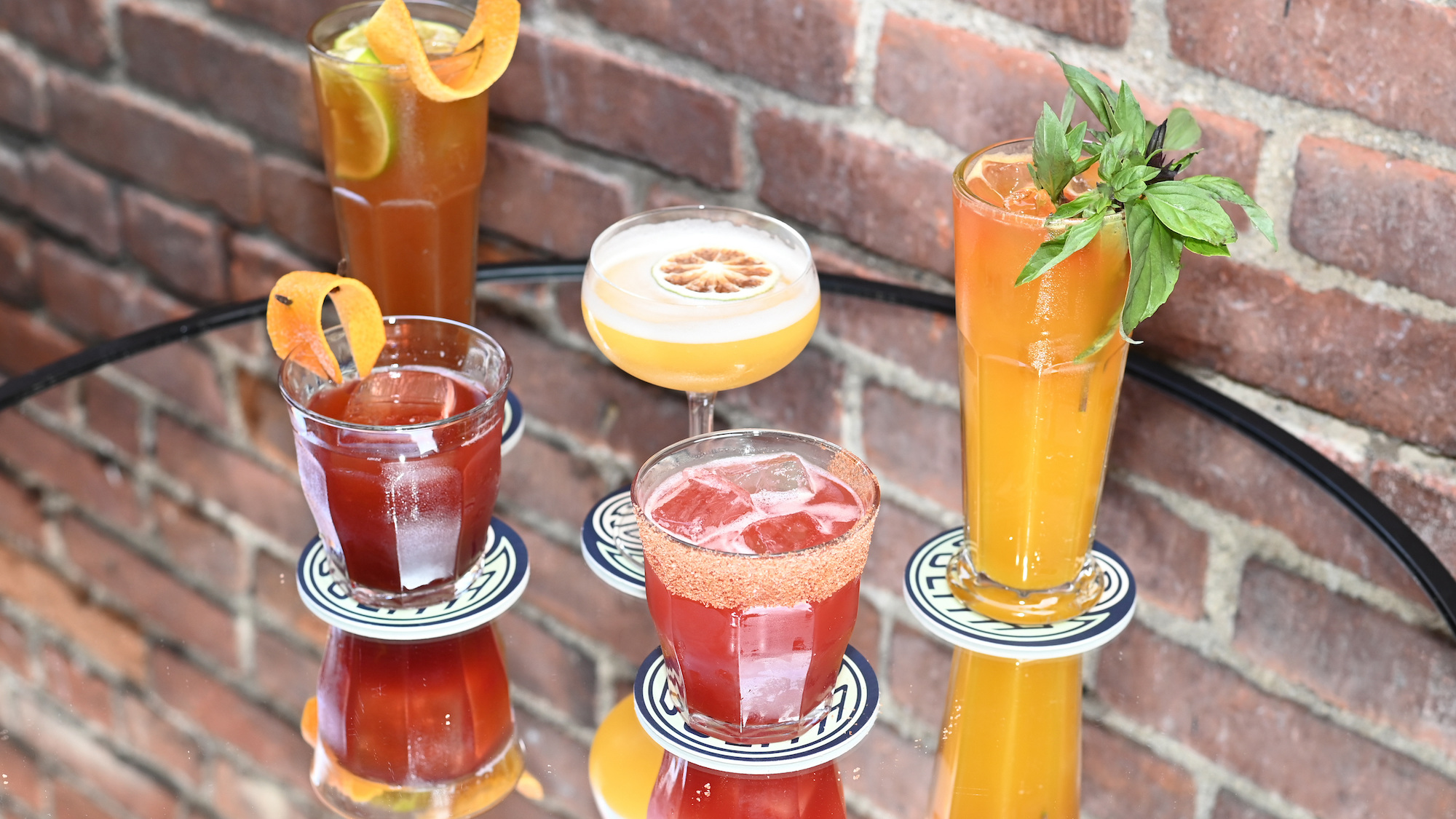
Bolita’s Love Letter to Family, Cuba, and Virgil Village, in Five Cocktails
Los Angeles-born cousins and industry veterans Daniel Navarro and Chris Raba always hoped to team up to open a bar of their own. Surprisingly, the pandemic brought the opportunity right to their doorstep. Through local connections, friends, and a bar concept that didn’t quite take, they were able to step into one of the most storied locations in Virgil Village to create Bolita, a Cuban-accented cocktail bar with plenty of L.A. flair.
Named after a type of lottery popular in Cuba and South Florida in the late 19th and early 20th centuries, Bolita takes over the infamous Smog Cutter space. Now with exposed brick, more light, and a bit of a midcentury modern vibe, the room feels both new and timeless — the perfect stop for a tropical drink or a snack like plantain chips or bocaditos (miniature sandwiches) made on Cafe Tropical’s medianoche bread. “We just wanted it to feel like the kind of place my grandfather would have owned in Cuba,” Navarro says.
Navarro has already been carrying on the family legacy at El Cochinito and Cafe Tropical in Silver Lake. (His grandmother opened the former in 1988 after serving home-cooked meals to other Cuban expats when she moved to L.A.) Raba was most recently the bar lead at Rudolph’s Coffee & Tea at The Exchange in Downtown L.A., before the pandemic changed his career trajectory.
Before that, he spent nearly 20 years working with some of the most innovative cocktail creators in Los Angeles, including the opening team at Gwen in Hollywood and the now-defunct Birch.
“He’s kind of the Miles Davis of cocktails, super-innovative and creative,” Navarro says of his cousin. Maybe not Miles Davis, Raba says. But he leans on an improvisational style that results in fantastic drinks, both boozy and zero-proof. Here Raba gives the lowdown on how he created five signature drinks for Bolita:

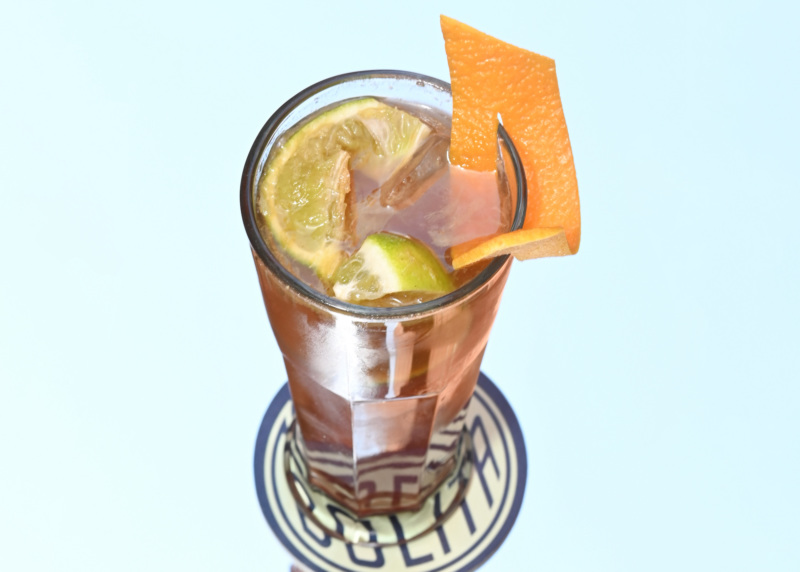
1. Benny “The Jet” Rodriguez
“We’re in a Cuban-inspired bar, so I naturally looked at classic Cuban cocktails. For this one I started with a Cubre Libre, or rum and Coke. I don’t consider the original a balanced cocktail. It leans too sweet. So instead of Coca-Cola, I wanted to make my own cola-inspired syrup. There are like 18 different ingredients in our syrup — I’m super grateful to my prep person, Tony, who helps a lot here. It definitely evokes the notion of cola, but it’s multilayered, rich, and complex.
As I was playing around with the cocktail, I wanted to punch up those cola flavors. So I kept all of the solids from the syrup and infuse the spirits, a combination of Ray & Nephew Jamaican rum, Fernet Branca, and Ramazzotti amaro. It comes out tasting like a cola-flavored amari. Then we add bubbles to bring it back Cuba Libre-style and serve it over ice in a Collins glass. It’s like an industry handshake when someone orders it; it’s really enjoyable. I think it’s Daniel’s favorite cocktail (Ed. note: Daniel agrees.). The name is a throwback to the movie ‘The Sandlot,’ when Benny ‘The Jet’ Rodriguez becomes a Los Angeles Dodger.”

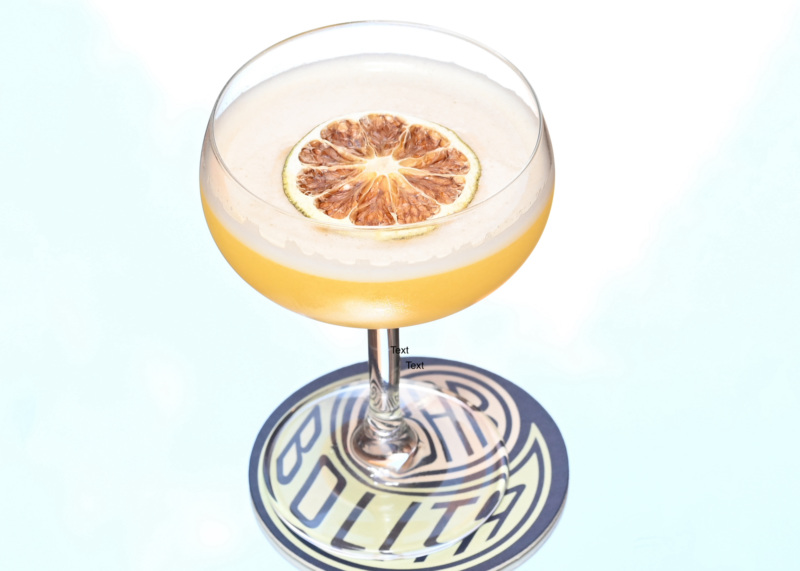
2. The Improved Hotel Nacional
“The Hotel Nacional is another Cuban classic, created for the opening of Hotel Nacional de Cuba in the 1930s. It’s gone through a couple of iterations over time, but it more or less calls for rum as the base spirit, lightly aged, with lime juice, pineapple juice, and apricot brandy or liqueur. What always bugs me is that it never tastes like apricot. I think every ingredient in a cocktail should make a noticeable difference in flavor, texture, whatever. Otherwise, what’s the point? I kept revisiting this drink over the years but could never figure out how to get it right — I really wanted that apricot to come through.
I start with Saison Pale, a blend of rums from three countries that’s aged for three months. I infuse that with dried Blenheim apricots from California, which have a punchy flavor, plus fresh pineapple and fresh lime. It needed a touch more sugar, so I cranked up the apricot a bit more with apricot syrup. Once that was all together, I needed one more element, something not so fruit-forward. I’m a big fan of green and yellow Chartreuse. I knew green plays well with stone fruit, so for an aromatic element we spray the top. It adds nice herbal and floral notes without overtaking the cocktail.”
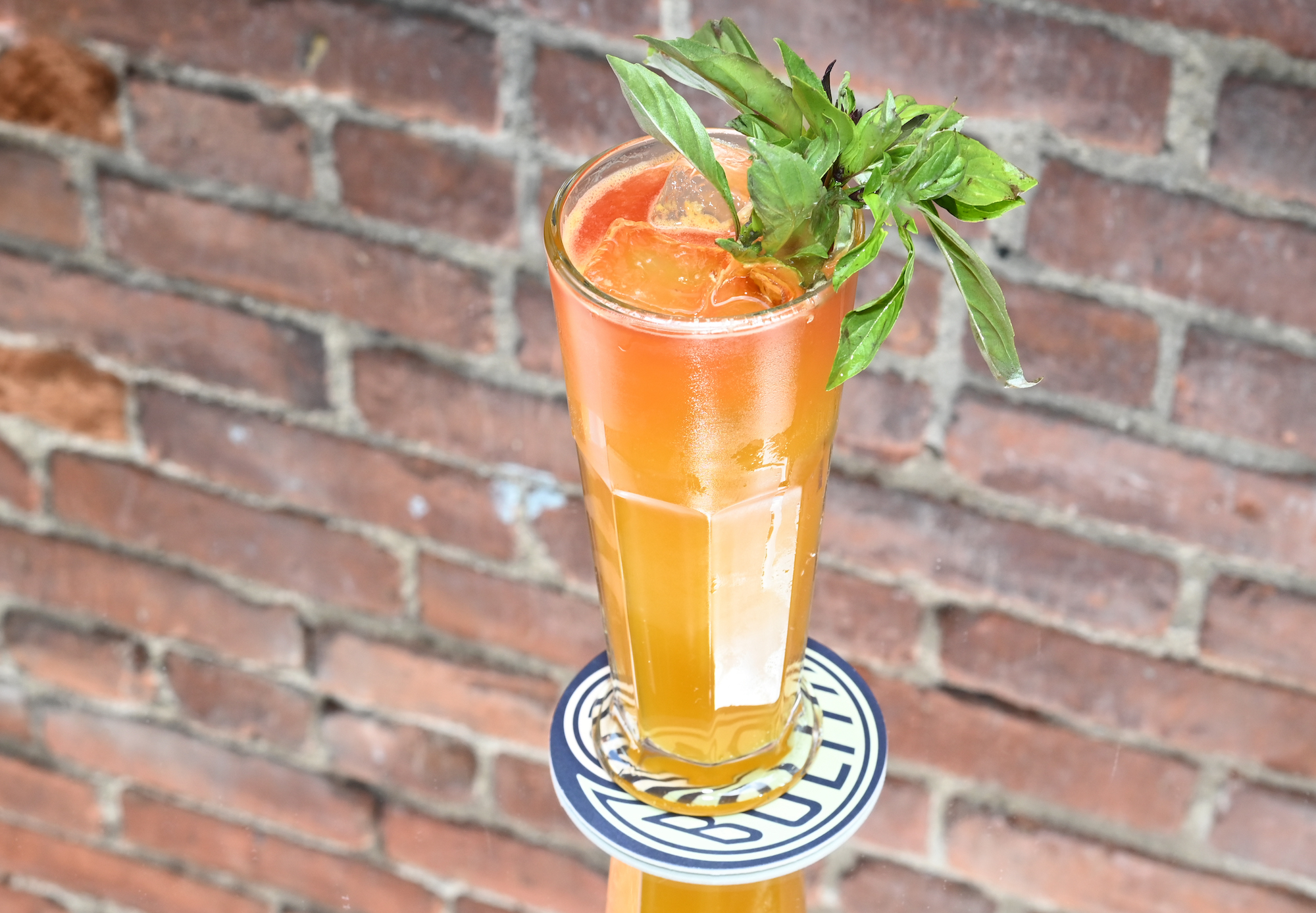

3. The Paradise City
“This started as an homage to the previous tenant, the Smog Cutter, which was here for many years. Everyone had a bit of a love-hate relationship with it. It was a total fixture, a dive bar and karaoke spot — the kind of place that was notorious and beloved by a lot of people in the neighborhood.
Its owners were Thai, so I wanted to bring that into the drink. I had this idea for a variation on a Moscow Mule, but to me, it’s always a bit of a challenge to make a vodka-based cocktail. Vodka is a blank canvas that will take on all the other elements of the drink. So there’s lemon verbena-infused vodka, turmeric syrup, lemon juice, bubbles, a float of hibiscus bitters on top, and a garnish of Thai basil. It’s on the herbal side of things, but bubbly and refreshing.
I use turmeric for a spicy herbal note instead of ginger. And lemon verbena for citrusy notes. I tried lemongrass, but it had a sort of a soapy flavor. The bitters are a bright, deep magenta red that reminds me of a Los Angeles sunset. And the basil looks like a palm tree. ‘Paradise City’ is one of my favorite songs, and it’s a song written about coming back to L.A. And the Moscow Mule originated here, so all the pieces fit.”
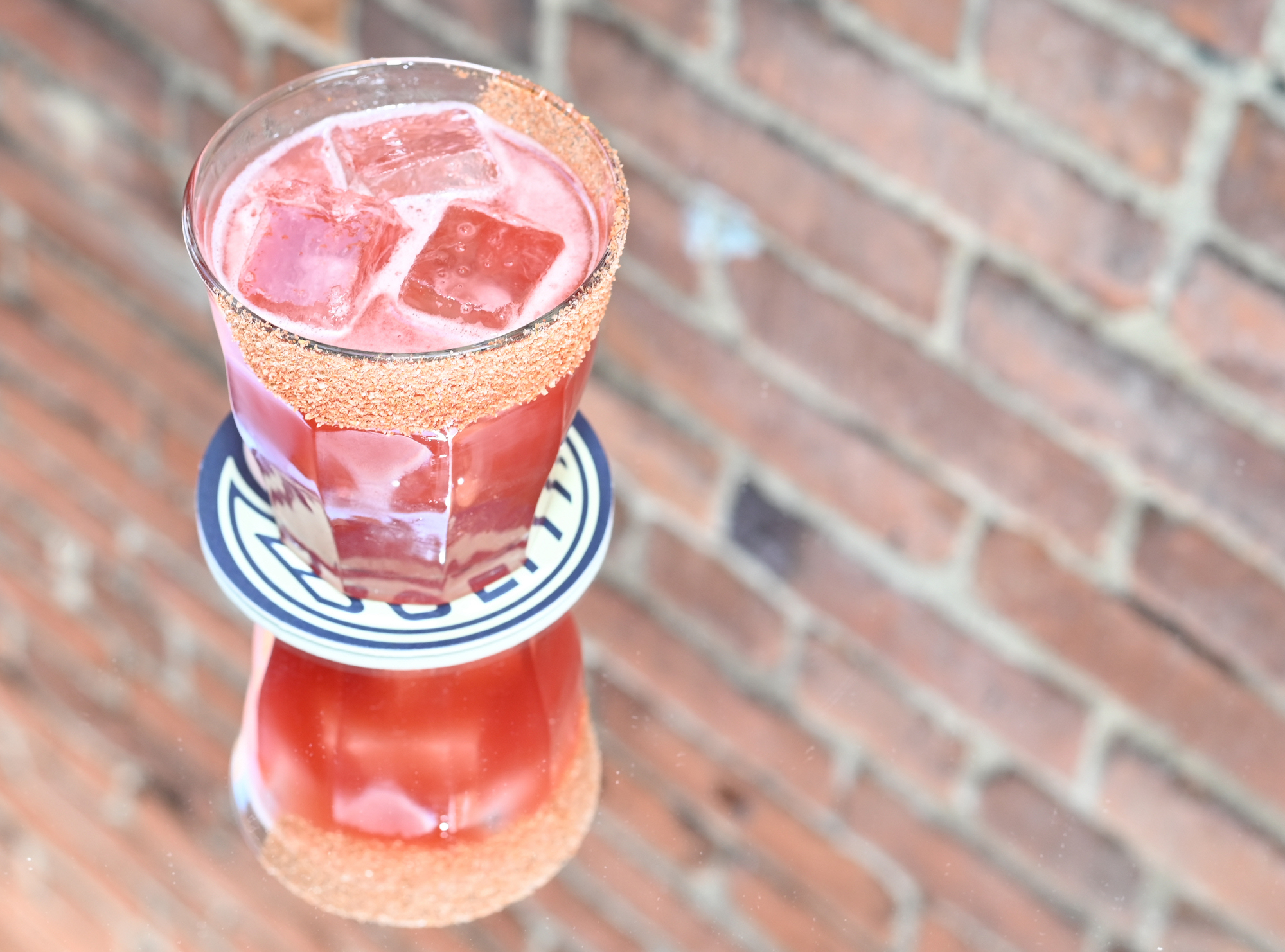
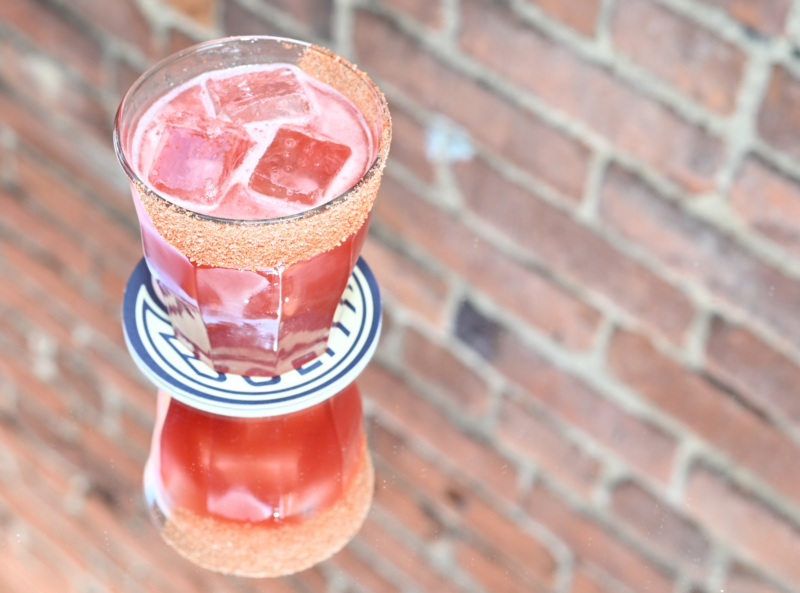
4. Family Meal
“The original inspiration for this was a really obscure pechuga-style apple brandy with a smoky flavor. My goal was to make an apple-based cocktail with savory focus, which took a few tries to get right.
Lechon is my favorite Cuban dish, so I wanted to bring that in with a fat-washing technique. We get lechon fat from El Cochinto — all those seasonings linger in the fat — and infuse it in St. George apple brandy. I created a salt rim with classic Cuban spices like bay leaf and smoked paprika. I needed an acid, and originally tried lemon, honey, and tart cherry juice. But there were too many things; the cherry got lost. With a lot of research and math, I came up with something I call cherry sweet and sour, which is basically tart cherry juice with a bit of sugar to really punch up its flavor.
There’s a mezcal spritz on top, the savory salt rim, the richness of the lechon, and those Golden Delicious apple notes, fading into the sweet-tartness of a cherry pie. It’s like dinner and dessert, so I named it after the staff meal at the beginning of a shift.”

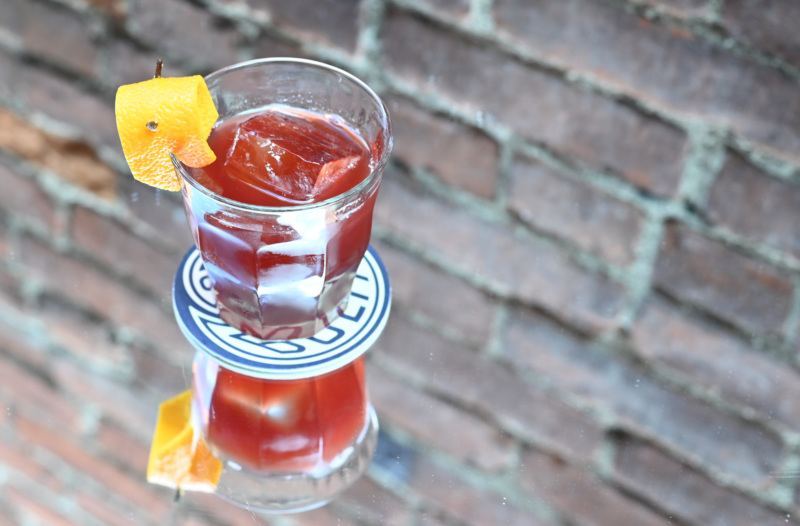
5. Devil’s Day Off
“I started seeing more low- and zero-proof cocktails a few years ago, and it was going to be the next stop in my programming at Rudolph’s in March 2020. But the pandemic happened. People go to bars to be social, and because they can get things they wouldn’t make at home. But not everyone drinks alcohol, and just because you’re not doesn’t mean you should have to give up the social aspect of being at a bar.
Zero-proof cocktails should be just as complex as alcohol-based ones. I tend to prefer the boozy and bitter side of cocktails, so I created a zero-proof version that’s a riff on an aged rum Negroni. Lyre’s is a terrific line of non-alcoholic spirits, and the Dark Cane Spirit has a lot of notes of dark aged rum, baking spice, and caramel. I use that, and Lyre’s Italian aperitif, which is similar to Campari or Aperol. It’s bright and citrusy but with a distinct bitter edge. And verjus rouge, which is essentially juice from red wine grapes that haven’t been fermented. I make an Earl Grey and clove syrup, which lends some bergamot flavor and tannins from the tea, and more baking spice. It’s definitely on the darker, broodier side, and a drink I can’t wait to finish — that’s how I knew I was onto something.”
Lesley Balla writes about restaurants, travel, wine, and more. You’ll find her work in publications including Los Angeles magazine, Angeleno, The Hollywood Reporter, and The Seattle Times. In a previous life she was the L.A. editor for Zagat and Eater. Follow her on Twitter and Instagram. Follow Resy, too.
















